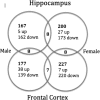Experience and the developing prefrontal cortex
- PMID: 23045653
- PMCID: PMC3477383
- DOI: 10.1073/pnas.1121251109
Experience and the developing prefrontal cortex
Abstract
The prefrontal cortex (PFC) receives input from all other cortical regions and functions to plan and direct motor, cognitive, affective, and social behavior across time. It has a prolonged development, which allows the acquisition of complex cognitive abilities through experience but makes it susceptible to factors that can lead to abnormal functioning, which is often manifested in neuropsychiatric disorders. When the PFC is exposed to different environmental events during development, such as sensory stimuli, stress, drugs, hormones, and social experiences (including both parental and peer interactions), the developing PFC may develop in different ways. The goal of the current review is to illustrate how the circuitry of the developing PFC can be sculpted by a wide range of pre- and postnatal factors. We begin with an overview of prefrontal functioning and development, and we conclude with a consideration of how early experiences influence prefrontal development and behavior.
Conflict of interest statement
The authors declare no conflict of interest.
Figures
References
-
- Kaas JH. The organization of neocortex in mammals: Implications for theories of brain function. Annu Rev Psychol. 1987;38:129–151. - PubMed
-
- Kolb B. Do all mammals have a prefrontal cortex? In: Kaas J, editor. Evolution of Nervous Systems: A Comprehensive Reference. Vol 3. New York: Elsevier; 2006. pp. 443–450.
-
- Pandya DN, Yeterian EH. Architecture and connections of cortical association areas. In: Peters A, Jones EG, editors. Cerebral Cortex. Vol 4. New York: Plenum; 1985. pp. 3–61.
-
- Warren JM, Kolb B. Generalizations in neuropsychology. In: Finger S, editor. Brain Damage, Behavior and the Concept of Recovery of function. New York: Plenum; 1978.
-
- Goldman-Rakic PS. 1987. Circuitry of the primate prefrontal cortex and regulation of behavior by representational memory. Handbook of Physiology: The Nervous System. Part 1: Higher Functions of the Brain, ed Plum F (American Physiological Society, Bethesda), Vol 5.
Publication types
MeSH terms
Substances
LinkOut - more resources
Full Text Sources
Miscellaneous



